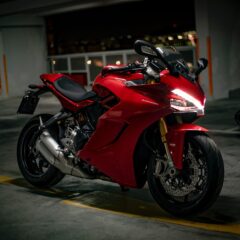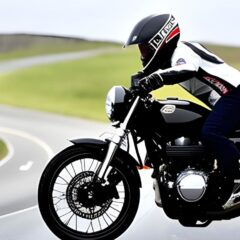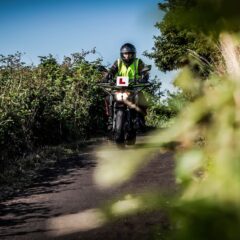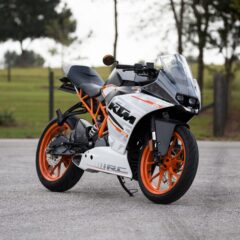
7 Top Motorcycle Accessories
With Christmas just around the corner, you might be wondering what to get your favourite motorcycle enthusiast or even a little something for yoursel...
 Phoenix Motorcycle Training LTD
Phoenix Motorcycle Training LTD
 Phoenix Motorcycle Training LTD
Phoenix Motorcycle Training LTD

To gain the freedom of the road in the UK, your first step is to apply for a provisional licence. The earliest you can do this is at 15 years and 9 months of age. If you want to drive a car, you’ll need to wait until you’re 17 to get behind the wheel. Motorcycles and mopeds are different. A compulsory basic training course will teach you how to ride if you’re 16 or older.
That means a motorcycle or moped will open the door to freedom on the road earlier. Motorcycle training for 16-year-olds starts with a compulsory basic training course. It’s the same for anyone who wants a motorcycle licence. Training starts with the basics. Read on to learn everything you need to know about motorcycle training for 16-year-olds.
Kids as young as five or six can learn to ride a motorcycle, as long as it’s not on public roads. Dirt biking and trail riding are great activities for the whole family. There are no licencing laws because you’re not riding on public roads.
To enjoy riding on the road, you’ll need the right paperwork. That process starts with applying for your provisional licence. It’s the same licence for cars, motorcycles and mopeds.
The big difference is how long you need to wait before you can start using your provisional licence. To use your licence for learning to drive, you must wait until your 17th birthday. If you want to take motorcycle training, you’ll need to be 16 or older.
With your provisional licence in hand, you can book a compulsory basic training course. This is the very first step to riding on public roads in the UK. No prior motorcycling experience is needed. However, it does help to know how to ride a push bike. That’s mostly for balance reasons. Balance skills for a bicycle translate neatly to riding a moped or motorcycle.
After successfully completing a compulsory basic training course, you’ll get a certificate. The CBT certificate is also known as a DL196. This, along with your provisional licence, lets you ride on most UK roads with a lower-powered motorcycle or moped. You could think of it as a motorcycle licence for 16 year olds but you can gain this certification at any age.
A compulsory basic training course is exactly what it says on the tin – it’s the first compulsory step to riding a motorcycle or moped on UK roads. It helps you to develop the basic skills you need to handle a motorcycle or moped safely in traffic. And it’s simply training, there are no tests at this stage. So what can you expect from the training?
Depending on who you choose to train with, there will be slight differences in the actual day. However, all compulsory basic training courses have a similar format. Knowing what to expect can reduce your nerves and help you arrive prepared for a fun and interesting training day.
The beginning of your compulsory basic training will be in the classroom. Your instructor will take you through what you can expect over the next 6 or so hours. They’ll also check your eyesight and ensure your paperwork and kit are in order. If you choose to take your CBT with Phoenix Motorcycle Training, your course cost covers everything you need – helmet, jacket, bike, petrol and insurance. Just bring your lunch and wear sturdy shoes or boots. You can’t wear trainers.
After going over all of the paperwork and theory of your compulsory basic training course, it’s time to head outside. You’ll be introduced to your training motorcycle and taken through all of the necessary controls. By the end of this lesson, you’ll know how to perform basic safety checks as well as how to turn the motorcycle on and off.
This part of the training can be taken with as many as three other students. When you start your on-the-road training, your group may be split so you get more of your instructor’s attention.
Now that you understand the very basics of motorcycling, it’s time to try riding! This can be equally nerve-wracking and exciting. Keep cool and calm, it will help you focus on the skills you need to develop for riding on the road.
You’ll practice your balance along with all the necessary on-road riding skills. You’ll also practice safe routines for performing the full range of manoeuvers. Once you’ve got that down, it’s back to the classroom. If you’ve been training with three other students, your group will be split in two.
With the off-road practical experience under your belt, it’s time to cover the legalities and theory of safe riding. Pay attention because you’ll need this information to ride out at the end of the day. Once you finish in the classroom and ask all of your burning questions, it’s time to hit the road.
Riding in traffic can be a little disconcerting. But be assured, your motorcycle instructor won’t take you out on the road until they’re sure you have the skills, knowledge and confidence to handle it safely. Your confidence builds along with your skill throughout the day.
The on-road part of your day lasts about two hours. You’ll be in radio contact with your instructor the whole time and occasionally, you’ll pull over to chat about different aspects of your riding. When your motorcycle training instructor is certain you have developed the skills you need to be safe on the road, they’ll give you your DL196.
When you have your DL196, you can ride on most public UK roads. There are a few exceptions and caveats. Motorways are out for CBT riders. You’ll need to display L plates on your bike too. You’ll also need to be aware of the age and power restrictions for learner riders.
You can only ride a motorcycle or moped up to 50ccs if you’re 16. You’ll need to carry your provisional licence whenever you ride. Although it’s not a legal requirement, it’s also a good idea to have your DL196 with you too, or a photo of it on your phone.
Once you reach your 17th birthday, and beyond, you can ride a more powerful motorcycle. 125ccs is the limit for learner riders with DL196 certificates. If you want to ride a more powerful motorcycle, you’ll need to take further training. Direct Access Full Licence training is the fastest way to get the highest level licence for your age.
The DL196 is valid for two years. After this time, you’ll need to either get a full licence or re-take a compulsory basic training course to become re-certified. If you’re eager to spread your wings and learn to ride, why not get in touch with us today?

With Christmas just around the corner, you might be wondering what to get your favourite motorcycle enthusiast or even a little something for yoursel...

If you love motorcycle riding, you’ve probably daydreamed about riding a motorbike for a living. A professional racer or stunt rider is OK for some...

Getting a UK motorcycle licence can seem a complicated process. Particularly when compared to a driving licence for a car. Whether you choose the pro...
This website uses cookies to personalise content, ads, and analyse traffic, sharing data with partners who may combine it with other information. See our Privacy Policy for more information.